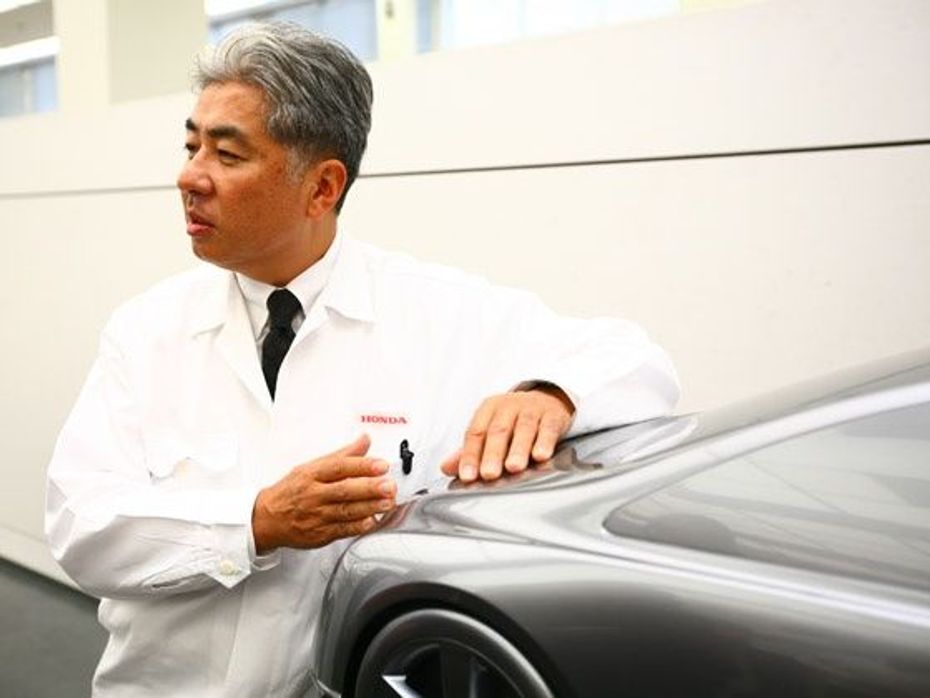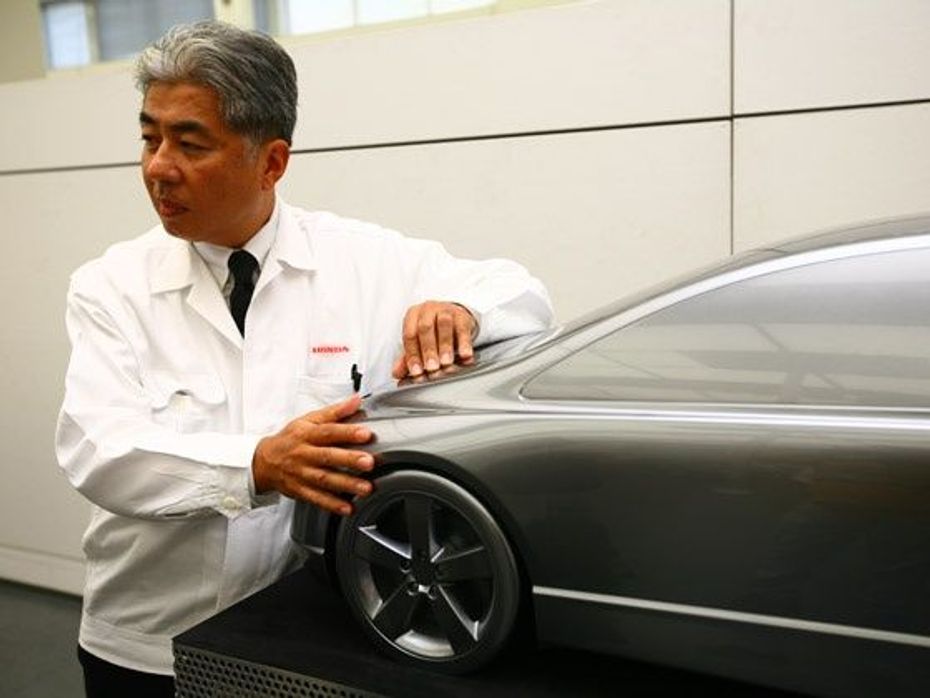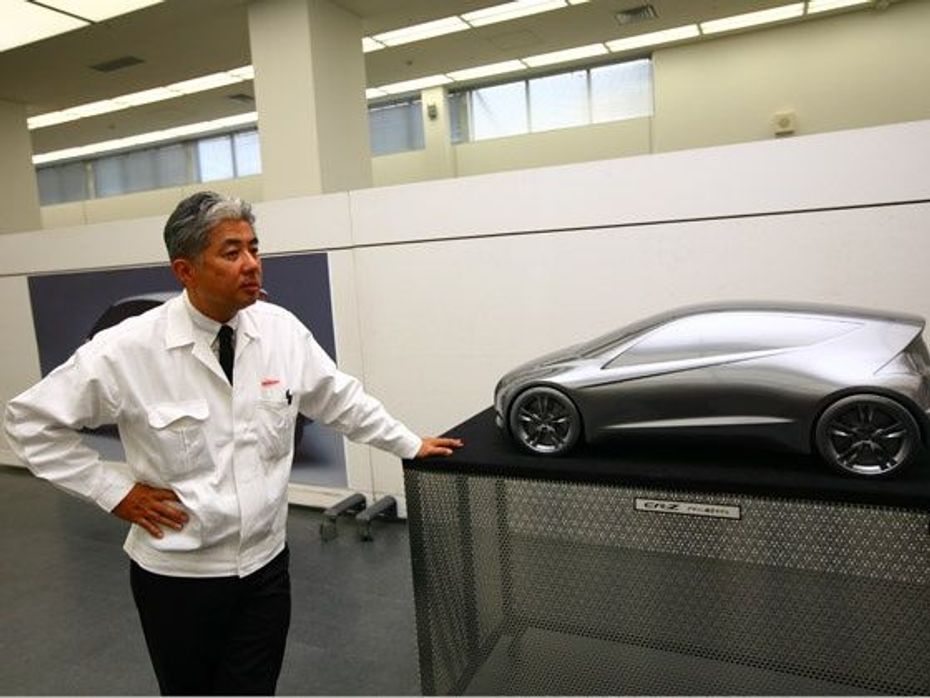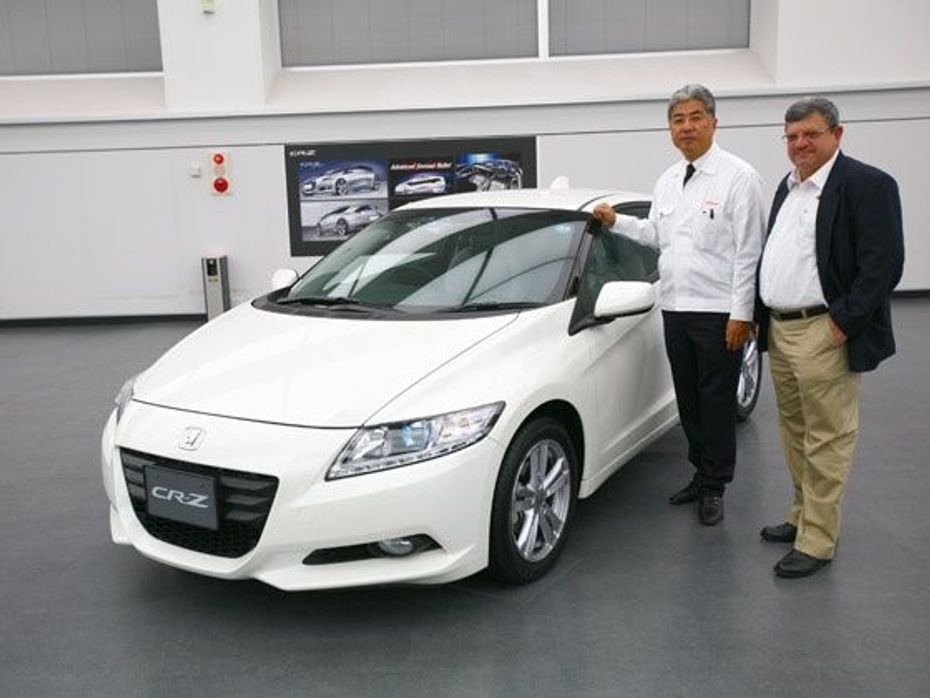
Honda Elevate SUV Becomes More Accessible To Indian Armed Forces With...
- Feb 29, 2024
- Views : 2376


AJD: They say the visual aspect of the car is what turns on many motorists to go out, look at it, consider it and then buy it. One of the key elements in this strategy is in the realm of the designers. No one plays this better, emotionally, visually, physically, to convey every sense of the term where passion, dynamism, utility, and also practicality comes into the picture. I’m standing here in one very famous design studio at Honda's R&D Company at Wacko in Japan. This place did the first designs for tow great Honda badges – the Civic and the Accord. Today it is churning out cars for the next generation. And we are going to speak to the person who heads it, runs it with a lot of skill, technology and passion going all the way back to the qualities endowed by Soichiro Honda, the company founder. I’m going to introduce to you Ebisawa-san, who is the heart and soul of Honda’s design studio.
Ebisawa-san, welcome to ZigWheels. Can you tell us about Honda design. What is the real Honda design philosophy, the DNA.
EB: Honda's DNA is represented by the two cars that we launched when we got into the automotive market, the S500 which is a very small sports car, and the other one is the T360 which is a small truck. The fact that those two cars were launched into the market almost simultaneously, this represents a key factor of the Honda DNA. The S500 is a sportscar which represents the dynamism and fun of cars. The other one is represented by the small truck which represents the mobility, the functionality of transporting people and goods. Dynamism and functionality – those form the core, the main axis of Honda’s DNA.
AJD: Very importantly, Honda came from motorcycles into cars. How much of the motorcycle rider do you still keep in mind when you think about evolving cars? Do you want to keep him in the same Honda family when he moves from motorcycles to cars?
EB: Of course, for motorcycles the first thing that comes to mind is the fun of riding, which connects to the dynamism of automobiles that we talked about earlier. At the same time, the motorcycle has the minimum and really efficient functionality in terms of mobility or moving people and goods. In that sense, even in motorcycles I believe that the combination of functionality and dynamism have been the key core in the design. IT is fair to say that we are developing motorcycles and automobiles based on the same DNA, with the same core.
AJD: Honda has moved across from a lot of different concepts - the sports car which you spoke about, the S500, and the truck as well. You were also the originator of the very small mini van, the Step Wagon. But I have never seen Honda pursue the Step Wagon concept outside Japan, whereas the other Japanese manufacturers took the small vans outside of Japan.
EB: It is true that we are not selling the Step Wagon outside Japan, however we are selling, for example, a model called Freed in Thailand and the Odyssey in the US as well. If you just look at the Step Wagon, we aimed it at the Japanese domestic market and we wanted to maximize the value of this car for the domestic market. That is how we stand right now.

AJD: This brings me to a very fundamental question. Many a times Japanese automakers have been accused of being very insular, looking only within Japan and not trying to take those concepts outside Japan. What you mention about the Step Wagon is very similar. This is different from what Maruti Suzuki has done with its Eeco and Omni, which are very similar in concept to the Step Wagon.
EB: I guess Suzuki has its own ideas, its own thinking. We are thinking of global cars, and when we say global cars, our four pillars are the Accord, the Civic, the CR-V and the Fit, or Jazz as it is known in India. Our strategy is to promote those four pillars all over the world and at the same time we try to come up with cars that are suited to the local needs of the different regions of the world and deploy some models there. That is our overall strategy. This is because even if you took the same car, depending on the market or the customers, depending on how they are accepted and how they are positioned is different from one market to another. So while we maintain those pillars very solidly, at the same time we try to tailor region dedicated cars that are finely suited to the needs of those markets.
AJD: Then you also have something like the City which we saw for Asia, and we also have the new small concept that is coming for the emerging markets. So that’s a change in your thought process, is it?
EB: The pillars remain unchanged. It is true that so far in the past when we talk about market-dedicated cars, we had cars targeted towards the Japan market or US market. We have many of those, that is true. Against that backdrop, it is true that the City was the first car that was targeted at the Asian market, and the small car here is the one that is targeted towards India, and to be deployed across Asia as well.
AJD: Very importantly, how much of a focus in design terms will come across the emerging market in the world which is Asia, because so far everything was focused etiher towards the US, Europe or Japan. How much will it now veer towards countries like India, China? Because they have very different sets of operating principles in play, and also local sensibilities are different from Europe and USA.
EB: First, we launched the City for Asia, next will be followed by the small car focusing on India first. We still don’t know what the acceptance will be for those cars yet. So what we would like to do first is to see how the market reacts to those models and how much acceptance those cars will see. And I believe that the proper sequence of events will be once we see how those cars are accepted in these markets and if necessary, come up with new models for those markets. Of course we do realize that Indian and other Asian nations are very critical, important to the future of this growth going forward.

AJD: Ebisawa-san, very important, in your presentation you made a reference to your design team working with the product planners to determine the positioning of a product in a particular segment of the market. So that positioning, do you take into account only pricing, or what other cars from manufacturers are there, or how much car you can give for that intended segment? How do you work on this front?
EB: One system that I did not explain well earlier was that at Honda, we develop cars in Honda project teams. That project team not only includes designers and product planners, but also engineering experts, testing experts, and importantly we also have the sales and production technology people as well as a part of the team. With those varied team members, they determine the positioning that they aim for. And when we say positioning, this includes not only pricing but also the targeted customer segment, as well as performance and overall size of the car. And of course, there are some among those requirements, which are contrasting or conflicting requirements. Fore example, we might want to aim for certain pricing, but at the same time there are some features that we certainly want to incorporate in that car. Putting those features means that the price will go up, so that’s one conflict there. Another one may be that we want to make the car as big as possible, but larger car means less fuel efficiency, so those are the conflicting requirements that we may have. In making the actual car take shape, the design is important, but another important role is how to get those conflicting requirements to co-exist.
AJD: So how do you resolve your contradictions or your conflicts?
EB: That's up to the team, each team does different things. Depending on what the team considers as the most important requirement, they might want to place higher priority – if they want higher dynamic performance they might settle for a higher price, or they might place the price as the highest priority, which means they have to compromise in other areas. In terms of design and engineering, they might make some design changes which helps to contribute to reduce the cost.
AJD: Ebisawa-san, what did you have to resolve as far as the design conflicts or packaging considerations when it came to the New Small Concept. This is Honda’s first small car for Asia, for emerging markets. What were the prime considerations you had when you evolved this design?
EB: The first difficulty or the challenge that we had was how to create an efficient and a highly functional packaging in the very small space of the car. Of course, for small cars being highly functional is very important we did not want to lose too much on the dynamism, the fun to drive quotient at the same time. So that was one conflict that we needed to resolve. Particularly for small cars like these, in order to give it a very efficient package, we had to raise the height of the car, but within that not compromising or losing on the dynamism was very difficult.
AJD: What were the details and highlights specifically for Asian tastes?
EB: Rather it is not just a consideration for Asia. So far I think some small cars have been launched for Asia, but those have been rather very squarish, box-shaped cars that are very functional. Against that backdrop, we wanted to propose something that has never been seen before. That was the idea that we put in for this car. Our major aim here is to try to provide a very small car, packed with dynamism in it.
AJD: How much of the production car will be faithful to the concept we saw this year at the Auto Expo?
EB: I cannot yet tell you, but I believe the car you will get to see in the market will never betray your expectations.

AJD: On this basis that you have a car which is price positioned for the market in India, do you think that from here on to be a serious player in Asia, in the biggest car market which is presently Asia, you will require to go even one step lower down the rung, go lower from this new small concept to a smaller car?
EB: For the future, let us think about it again once, and if and when we see the success of this car.
AJD: Let's assume success is guaranteed. Don’t you think that you need to evolve a whole product portfolio for a market that is really going, especially from the ground up?
EB: I cannot share the details here at all, but of course our R&D are engaged in different activities.
AJD: We didn’t want details, but the thought process. Are you attuned in your thoughts to going smaller from this segment, or not?
EB: All I can say for now is that we are going through a lot of studies and reviews for different potential, possible scenarios. But first we need to see how well this car gets accepted and by that I mean that we have all the technologies ready for anything to happen in the future. In that sense, this car is a very big challenge for us as well.
AJD: One final question to you, Ebisawa-san. If money was no objective, what sort of car would you design?
EB: That's a very good and difficult question. If you don’t have to think about the money, one aspiration I have is that, you know we had a car called the NSX many years ago. If we have all the resources to do that, it would be nice if we could do one car like that.

AJD: What is preventing you from doing an NSX for the present century? Because Toyota has already come out with the LFA. Don’t you think that Honda needs to give an answer to that?
EB: If you compare the companies, I think Toyota is large and they have a lot of resources. Against that right now Honda is holding back and accumulating resources so as to ensure survival. So that’s a different story, depending on the company.
AJD: Amongst all the different designers in the world, we have many different aspects coming. Adrian Hooydonk, Chris Bangle, Jeff Mays. Who do you think has played a pivotal role in influencing automotive design going up?
EB: That’s another good and difficult question. Rather than saying who had the most influence, I believe that BMW had a very big influence in setting the design trend for cars for 2000 and later. I think they came up with a new approach to the concave shape, the flame surfacing.
AJD: Thank you, Ebisawa-san, hope to see you in India during the launch of the car, and I hope that gives you enough impetus to design a car smaller than that for India. Arigato.

Honda Elevate SUV Becomes More Accessible To Indian Armed Forces With...

Had Your Eyes On The Honda Elevate? Now Might Be The Time To Consider...

This Many Honda Elevates Are Now On Indian Roads Since Its Launch

Honda Elevate vs MG Hector: Naturally Aspirated Or Turbo-petrol For...

Honda Elevate, City And Amaze Gets Additional Safety Features, Prices...

Honda Amaze Waiting Period Detailed: Wait Up To A Month To Bring It...

Maruti Suzuki Rock N Road: Redefining the SUV Experience

10 Lucky People To Win Gift Hampers With Maruti Suzuki Celerio Lucky...

Bosch Car Service: Your Trusted One-stop Destination for Car...

3 New Major Design Details Mahindra XUV 3XO Will Pack Over...
India's largest automotive community